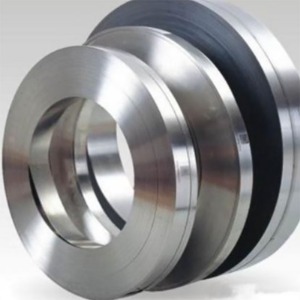Classification of sensor cores
Aug 13, 2024A magnetic material with low coercivity and high magnetic permeability. Soft magnetic materials are easy to magnetize and demagnetize, and are used in electrical and electronic equipment. The most commonly used sensor cores are iron-silicon alloys (silicon steel sheets) and soft ferrites. There are many types of soft magnetic materials, which are usually divided according to their composition:
① Pure iron and low-carbon steel. The carbon content is less than 0.04%, including electromagnetic pure iron, electrolytic iron and carbonyl iron. It is characterized by high saturation magnetization, low price and good processing performance; but its resistivity is low and the eddy current loss is large under alternating magnetic fields. It is only suitable for static use, such as manufacturing electromagnetic cores, pole shoes, relays and speaker magnetic conductors, magnetic shielding covers, etc.
② Iron-silicon alloys. The silicon content is 0.5% to 4.8%, and it is generally made into thin plates for use, commonly known as silicon steel sheets. After adding silicon to pure iron, the phenomenon that the magnetic properties of magnetic materials change with the use time can be eliminated. As the silicon content increases, the thermal conductivity decreases, the brittleness increases, and the saturation magnetization decreases, but its resistivity and permeability are high, and the coercive force and eddy current loss are reduced, so it can be applied to the AC field to manufacture the iron cores of motors, transformers, relays, mutual inductors, etc.


③ Iron-aluminum alloy. Containing 6% to 16% aluminum, it has good soft magnetic properties, high magnetic permeability and resistivity, high hardness, good wear resistance, but brittleness. It is mainly used to manufacture iron cores and magnetic heads of small transformers, magnetic amplifiers, relays, etc., ultrasonic transducers, etc.
④ Iron-silicon-aluminum alloy. It is obtained by adding silicon to the binary iron-aluminum alloy. Its hardness, saturation magnetic induction, magnetic permeability and resistivity are all high. The disadvantage is that the magnetic properties are sensitive to composition fluctuations, the brittleness is large, and the processing performance is poor. It is mainly used for audio and video heads.
⑤ Nickel-iron alloy. Nickel content is 30% to 90%, also known as Permalloy. Through alloying element ratio and appropriate process, magnetic properties can be controlled to obtain soft magnetic materials such as high magnetic permeability, constant magnetic permeability, and moment magnetic. It has high plasticity and is sensitive to stress. It can be used as pulse transformer material, inductor core and functional magnetic material.


⑥ Iron-cobalt alloy. Cobalt content is 27% to 50%. It has high saturation magnetization and low resistivity. It is suitable for manufacturing pole shoes, motor rotors and stators, small transformer cores, etc.
⑦ Soft ferrite. Non-metallic ferromagnetic soft magnetic material. High resistivity (10-2~1010Ω·m), lower saturation magnetization than metal, low price, used as inductor components and transformer components (see ferrite).
⑧ Amorphous soft magnetic alloy. A non-long-range ordered, grain-free alloy, also known as metallic glass, or amorphous metal. It has high magnetic permeability and resistivity, low coercivity, insensitivity to stress, no magnetocrystalline anisotropy caused by crystal structure, and has the characteristics of corrosion resistance and high strength. In addition, its Curie point is much lower than that of crystalline soft magnetic materials, and the power loss is greatly reduced. It is a new type of soft magnetic material being developed and utilized.


⑨ Ultrafine crystal soft magnetic alloy. A soft magnetic material discovered in the 1980s. It is composed of a crystalline phase less than about 50 nanometers and an amorphous grain boundary phase. It has better comprehensive properties than crystalline and amorphous alloys. It has high magnetic permeability, low coercivity, and low iron loss, and it also has high saturation magnetic induction intensity and good stability. The main research is on iron-based ultrafine crystal alloys.